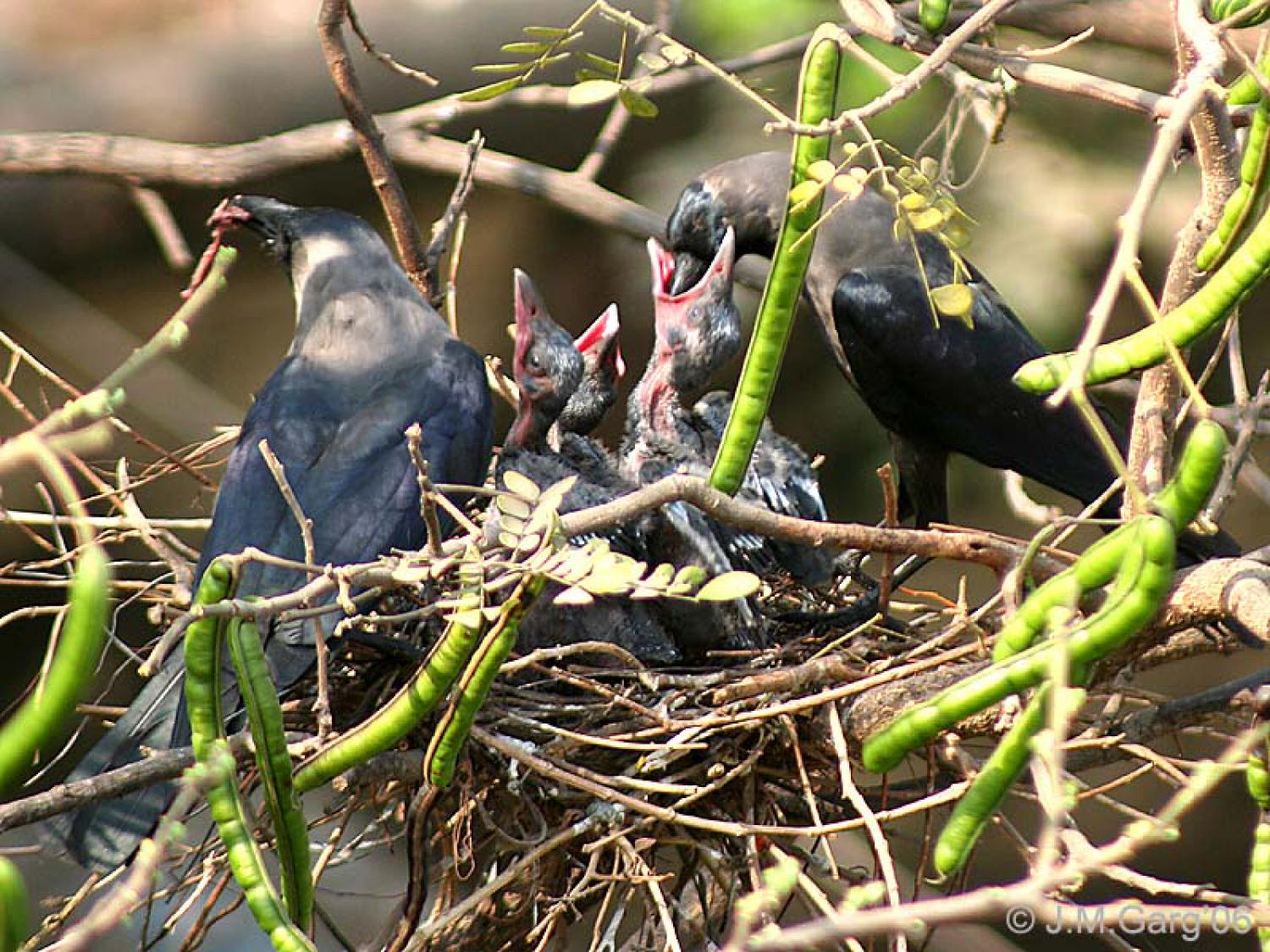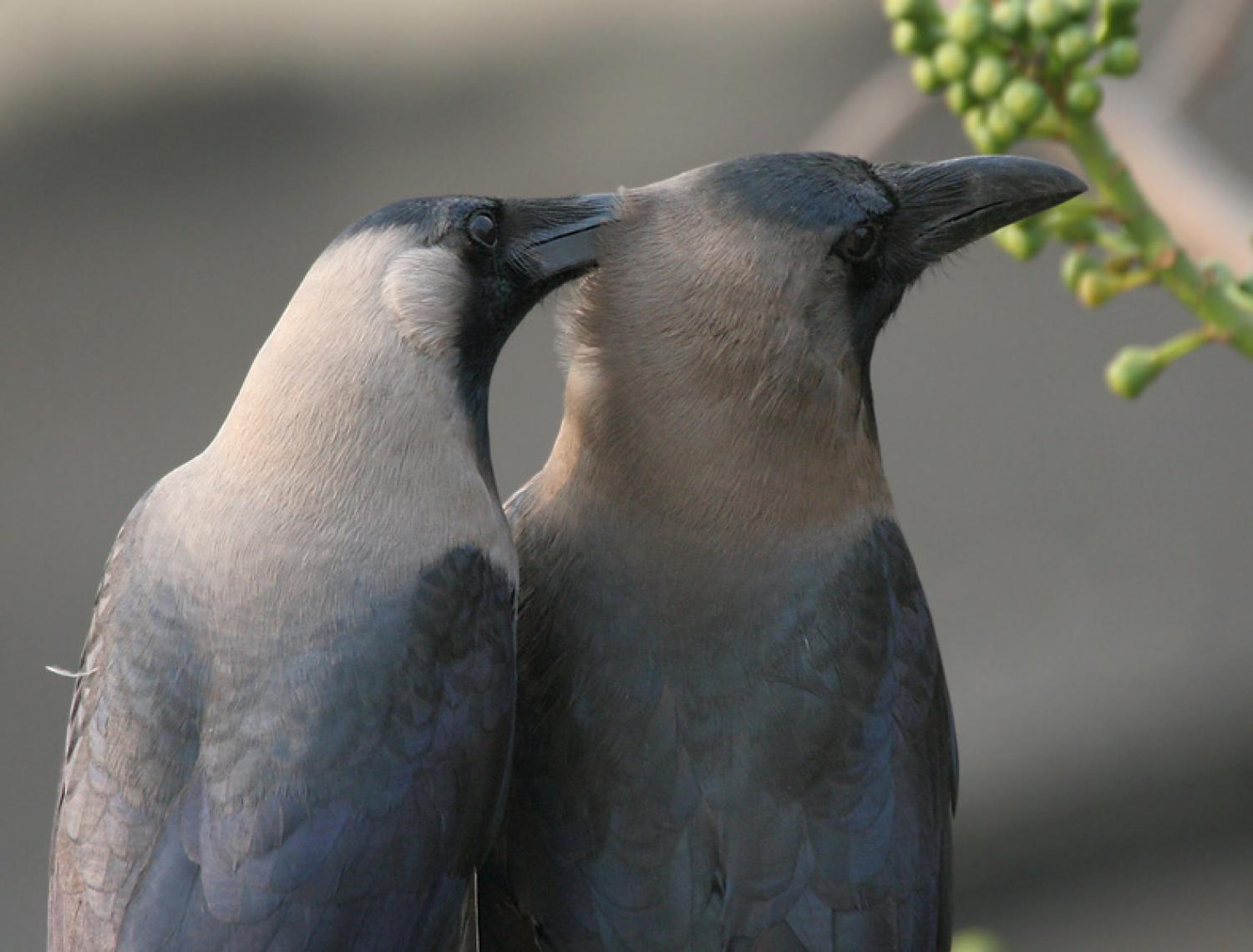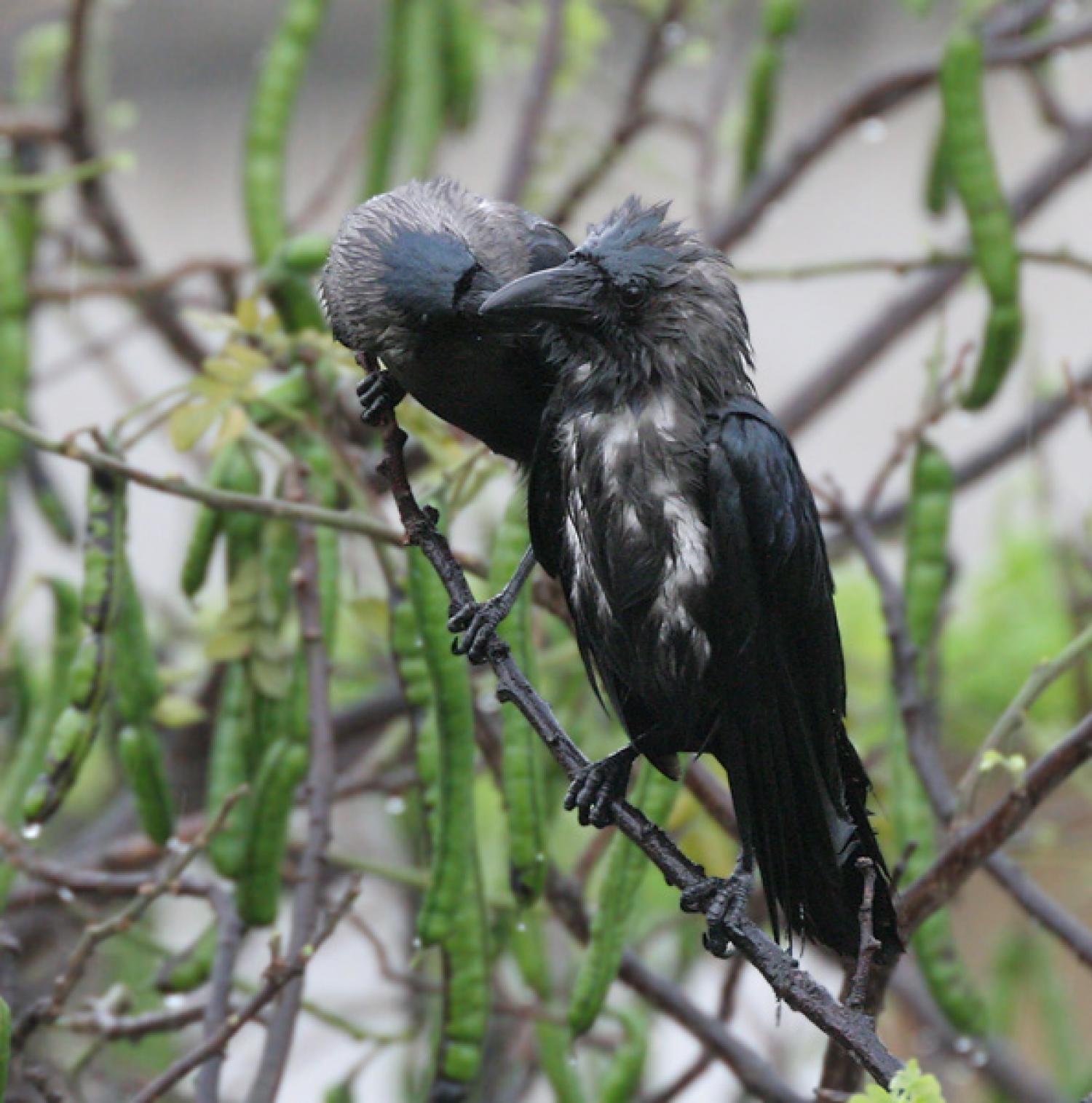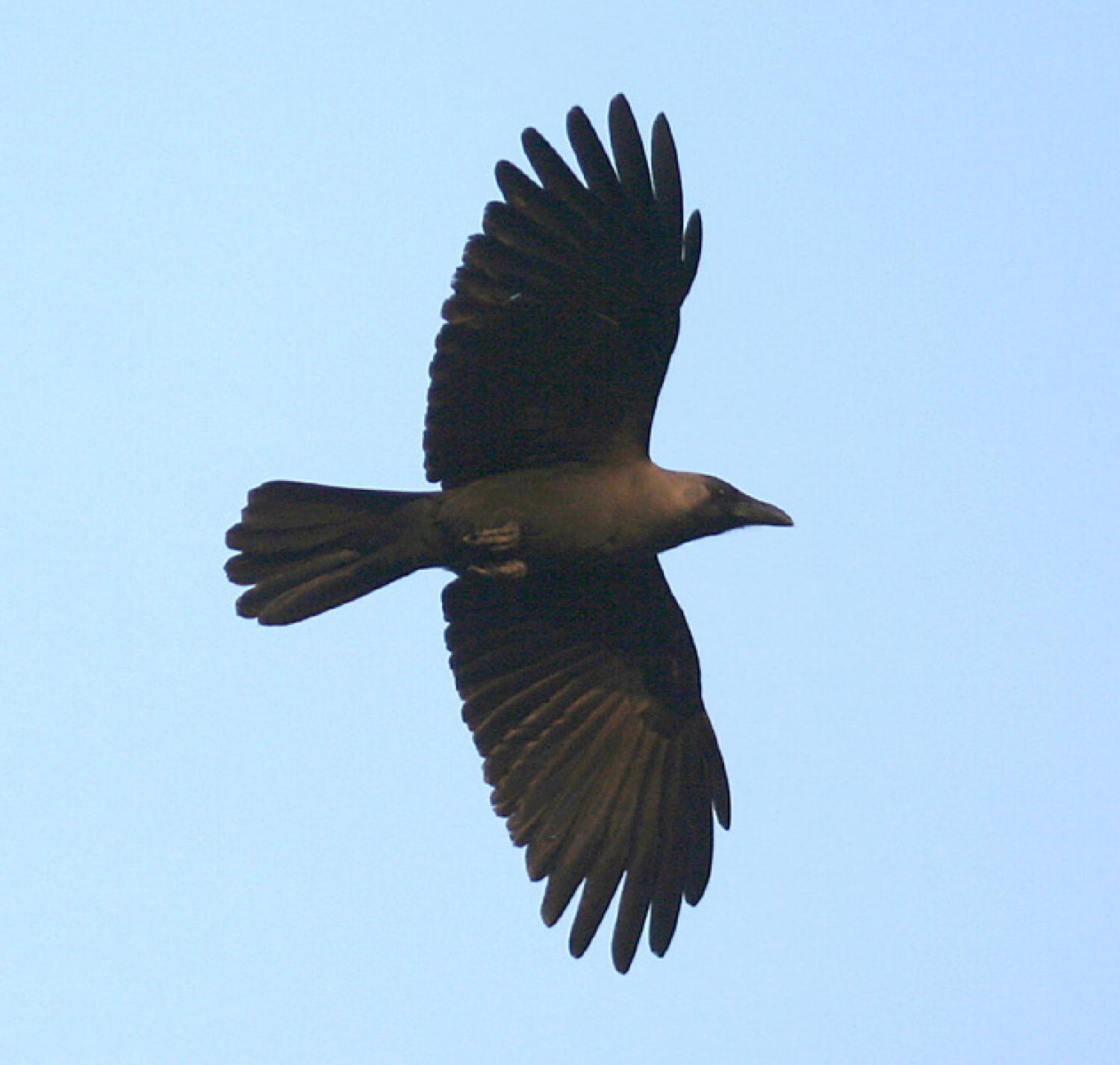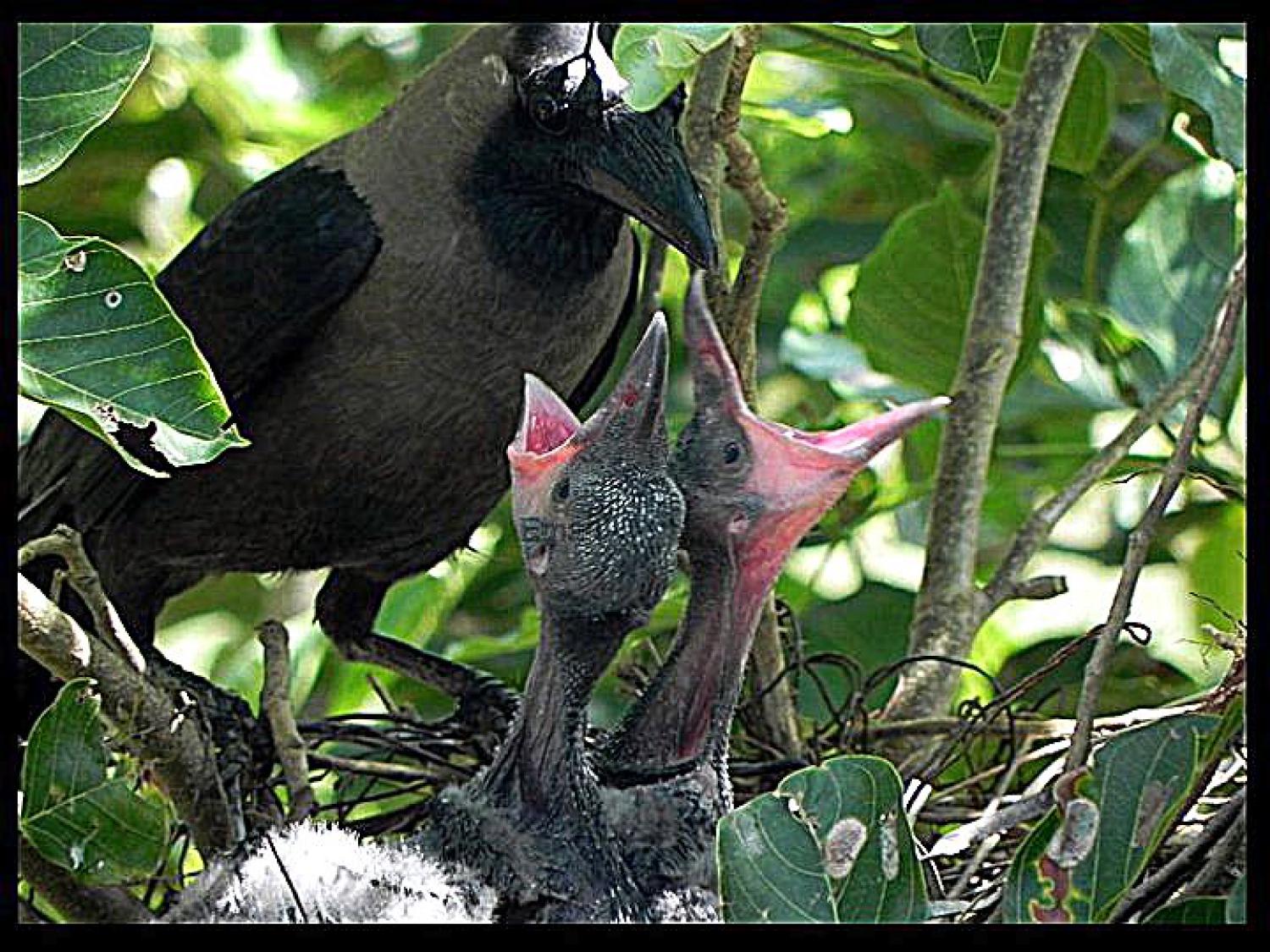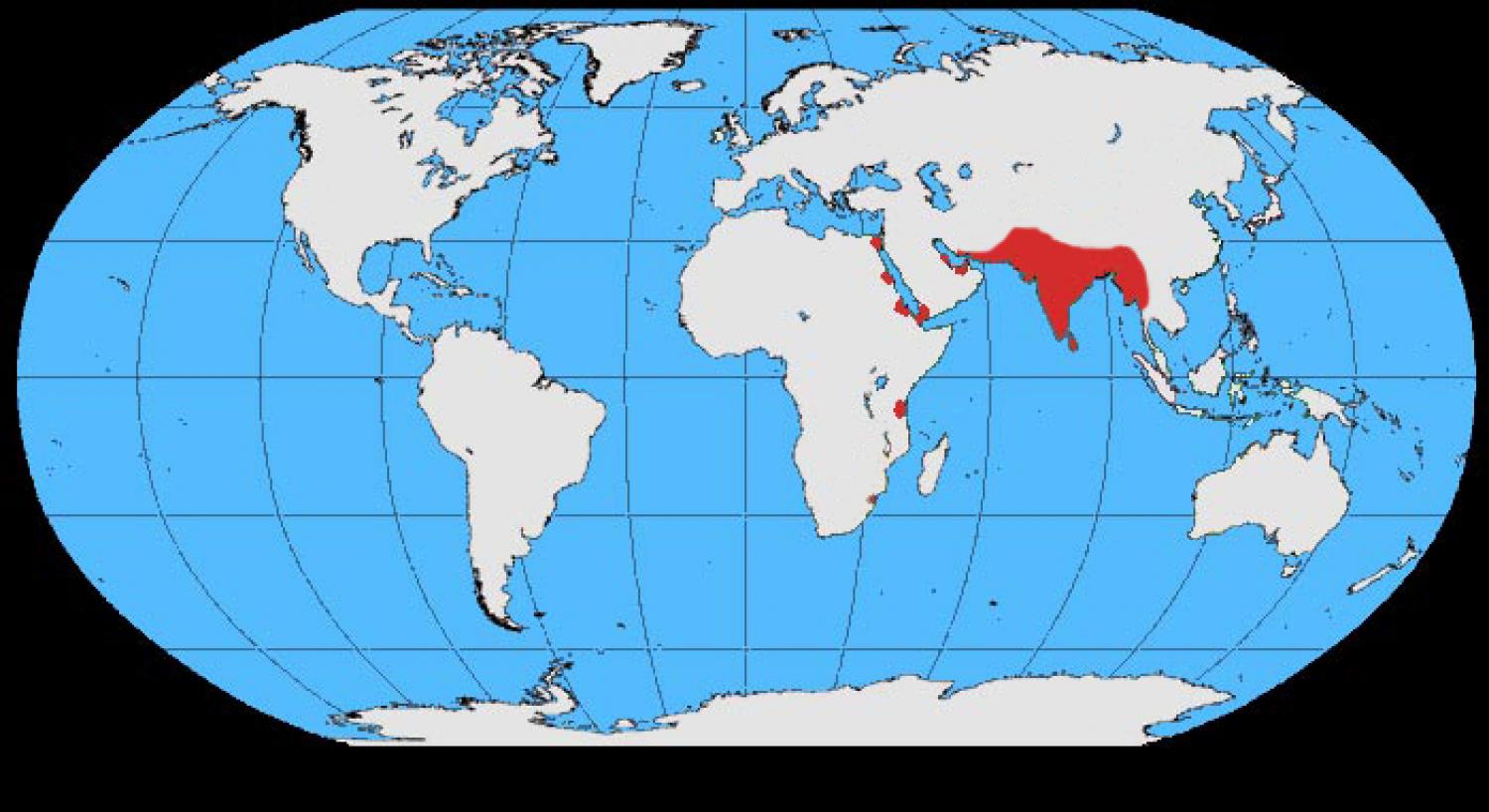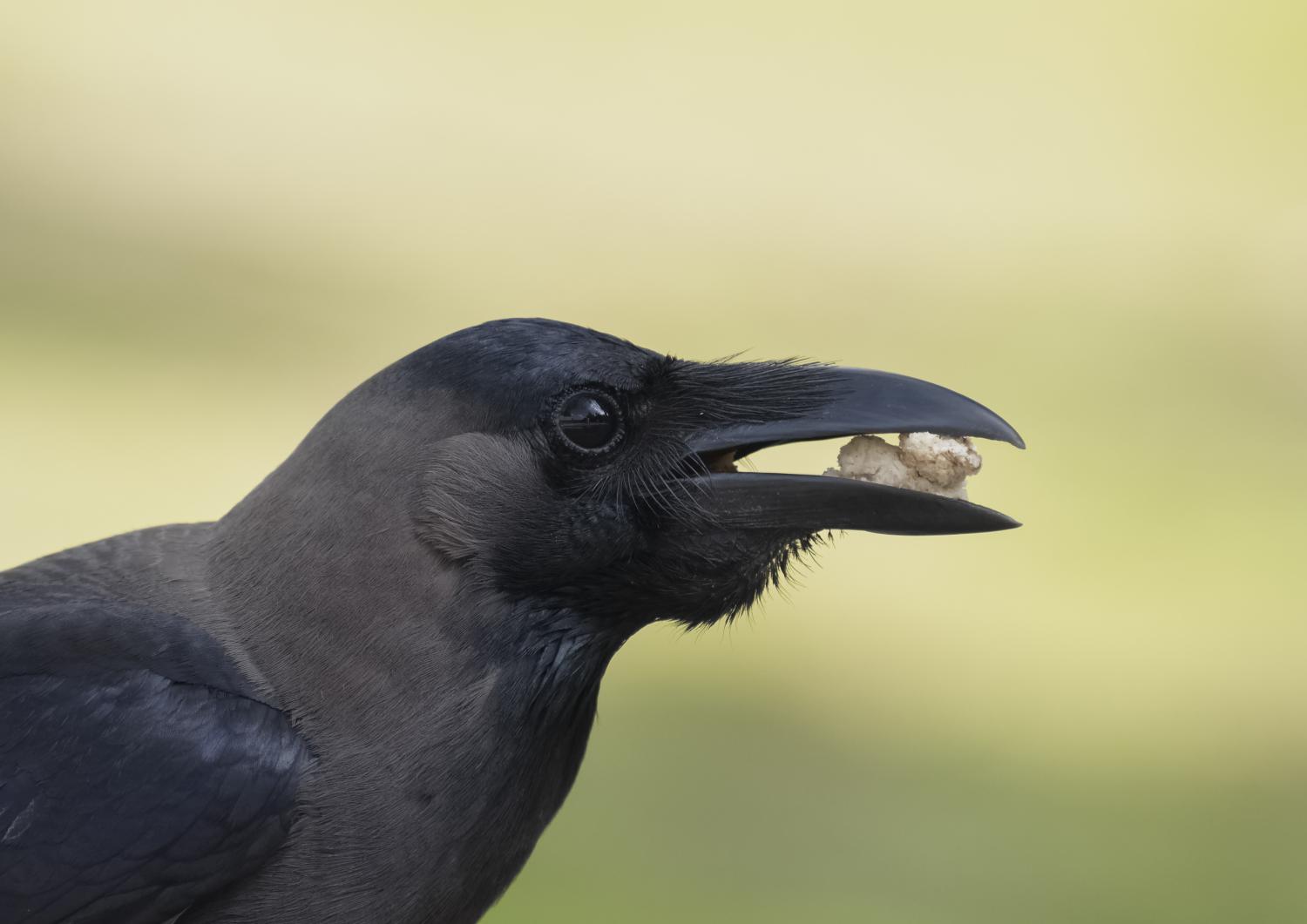Species of Thailand
House crow
Corvus splendens
Louis Jean Pierre Vieillot, 1817
In Thai: อีแก
The house crow (Corvus splendens), also known as the Indian, greynecked, Ceylon or Colombo crow, is a common bird of the crow family that is of Asian origin but now found in many parts of the world, where they arrived assisted by shipping. It is between the jackdaw and the carrion crow in size (40 cm in length) but is slimmer than either. The forehead, crown, throat and upper breast are a richly glossed black, whilst the neck and breast are a lighter grey-brown in colour. The wings, tail and legs are black. There are regional variations in the thickness of the bill and the depth of colour in areas of the plumage.
Taxonomy
The nominate race C. s. splendens is found in Pakistan, India, Nepal and Bangladesh and has a grey neck collar. The subspecies C. s. zugmayeri is found in the dry parts of South Asia and Iran and has a very pale neck collar. The subspecies C. s. protegatus is found in southern India, the Maldives (sometimes separated as maledivicus) and Sri Lanka and is darker grey. C. s. insolens, found in Myanmar, is the darkest form and lacks the grey collar.
Distribution and habitat
It has a widespread distribution in southern Asia, being native to Nepal, Bangladesh, India, Pakistan, Sri Lanka, Maldives and Laccadive Islands, South West Thailand and coastal southern Iran. It was introduced to East Africa around Zanzibar (about 1897) and Port Sudan. It arrived in Australia via ship but has up to now been exterminated. Recently, it has made its arrival in Europe and has been breeding in the Dutch harbour town Hook of Holland since 1998.
A population between 200 and 400 birds has been present in Sham Shui Po, New Kowloon, Hong Kong, in particular Lai Kok Estate and Sham Shui Po Park, as well as Kowloon Tsai Park in Kowloon Tsai. An individual has been present in Cork Harbour on the south coast of Ireland since early September 2010.
In the New World, a small population of house crows is established in the area around St. Petersburg, Florida.
It is associated with human settlements throughout its range, from small villages to large cities. In Singapore, there was a density of 190 birds/km2 in 2001 with efforts to suppress the population in planning.
Due to a human population explosion in the areas it inhabits, this species has also proportionately multiplied. Being an omnivorous scavenger has enabled it to thrive in such circumstances.
Invasive species
The invasive potential for the species is great all over the tropics. This species is able to make use of resources with great flexibility and appears to be associated with humans, and no populations are known to exist independently of humans. Based on niche-modelling it is estimated that it can also persist in some coastal areas in southern and northwestern Europe . In 2016, house crow was added to the . Breeding population of this species is reported from Netherlands (Hoek van Holland), while individuals were seen in Belgium, Hungary, Poland and Spain.
Diet
House crows feed largely on refuse around human habitations, small reptiles and mammals, and other animals such as insects and other small invertebrates, eggs, nestlings, grain and fruits. House crows have also been observed swooping down from the air and snatching baby squirrels. Most food is taken from the ground, but also from trees as opportunity arises. They are highly opportunistic birds and given their omnivorous diet, they can survive on nearly anything that is edible. These birds can be seen near marketplaces and garbage dumps, foraging for scraps. They have also been observed to eat sand after feeding on carcasses.
Nesting
At least some trees in the local environment seem to be necessary for successful breeding although house crows occasionally nest on telephone towers. It lays 3–5 eggs in a typical stick nest, and occasionally there are several nests in the same tree. In South Asia they are parasitized by the Asian koel. Peak breeding in India as well as Peninsular Malaysia is from April to July. Large trees with big crowns are preferred for nesting.
Roosting
House crows roost communally near human habitations and often over busy streets. A study in Singapore found that the preferred roost sites were in well-lit areas with a lot of human activity, close to food sources and in tall trees with dense crowns that were separated from other trees. The roost sites were often enclosed by tall buildings. Before flying into roost trees, crows make pre-roosting aggregations perched on TV antennas, roof tops, wayside trees, open fields, and feed or preen during this time.
Voice
The voice is a harsh kaaw-kaaw.
Relationship to humans
It is suspected that paramyxoviruses, such as PMV 1 that causes of Newcastle disease may be spread by Corvus splendens. Outbreaks of Newcastle disease in India were often preceded by mortality in crows. They have also been found to carry Cryptococcus neoformans, which can cause cryptococcosis in humans.
House crows in Tanzania curiously showed an absence of blood parasites, although some species such as Trypanosoma corvi have been first described from this species. Pathologist T.R. Lewis expressed surprise at the numbers of haematozoa present in the blood of house crows from Calcutta.
This article uses material from Wikipedia released under the Creative Commons Attribution-Share-Alike Licence 3.0. Eventual photos shown in this page may or may not be from Wikipedia, please see the license details for photos in photo by-lines.
Category / Seasonal Status
Wiki listed status (concerning Thai population): Introduced species
BCST Category: Introduced, with feral breeding stock apparently self-supporting
BCST Seasonal status: Resident or presumed resident
Scientific classification
- Kingdom
- Animalia
- Phylum
- Chordata
- Class
- Aves
- Order
- Passeriformes
- Family
- Corvidae
- Genus
- Corvus
- Species
- Corvus splendens
Common names
- Thai: อีแก
Conservation status

Least Concern (IUCN3.1)

Least Concern (ONEP)
- LC/EX (insolens) -
Photos
Please help us review the bird photos if wrong ones are used. We can be reached via our contact us page.
Range Map
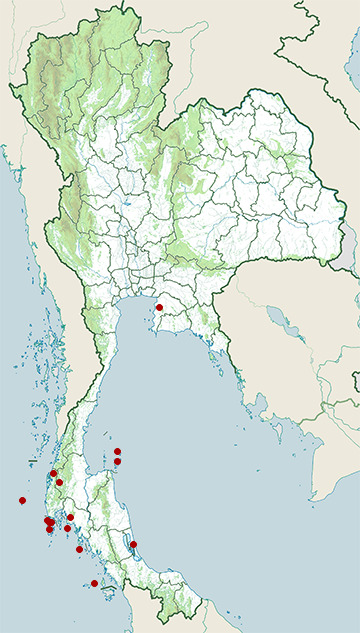
- Khao Phra Thaeo Wildlife Sanctuary
- Khao Sok National Park
- Khura Buri District, Phang Nga
- Ko Lanta National Park
- Ko Samui District, Surat Thani
- Mueang Krabi District, Krabi
- Mueang Phuket District, Phuket
- Phi Phi Islands
- Sathing Phra District, Songkhla
- Si Racha District, Chonburi
- Similan Islands
- Sirinat National Park
- Tarutao National Marine Park
- Thalang District, Phuket
- Than Sadet - Koh Pha-Ngan National Park
